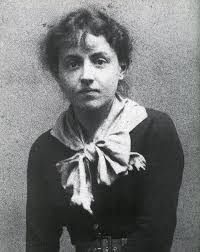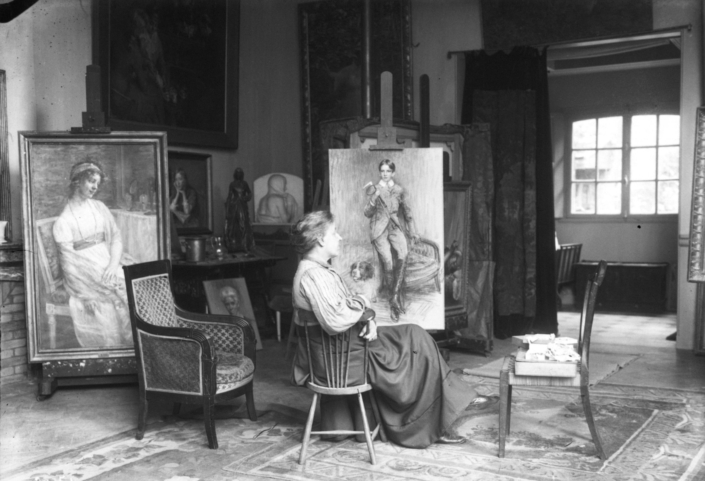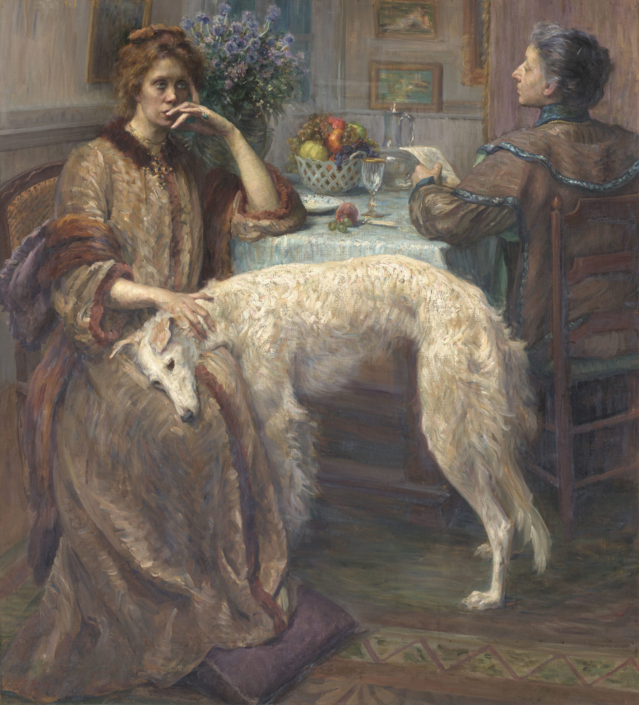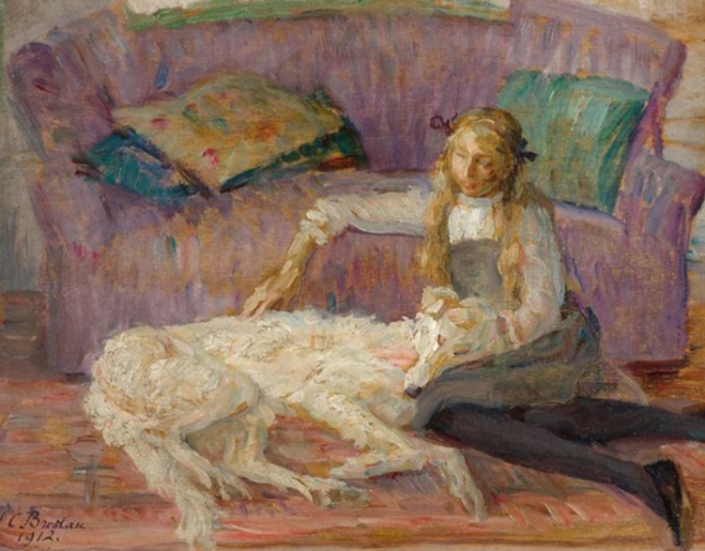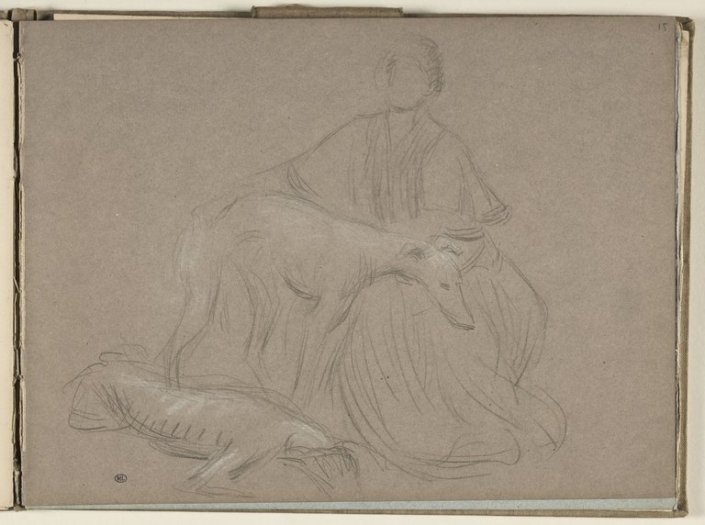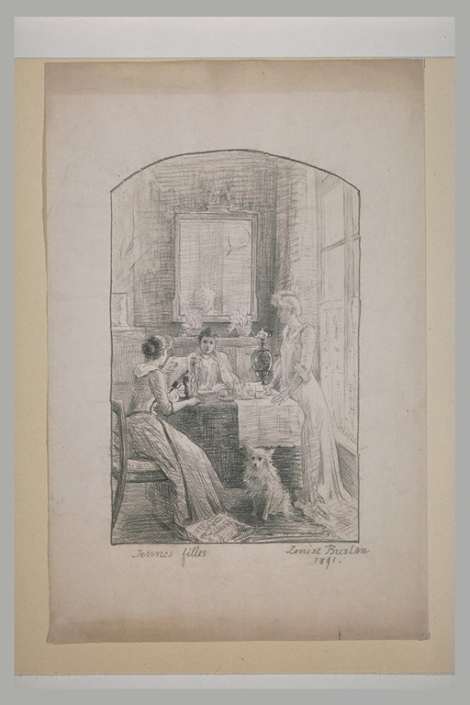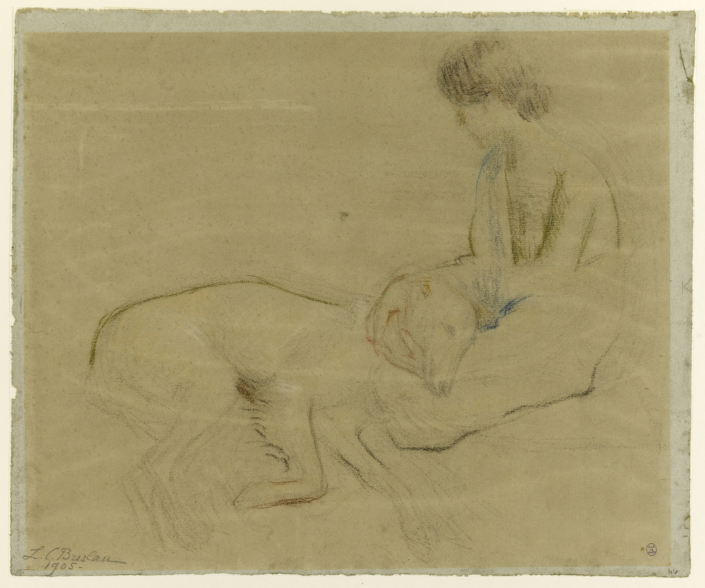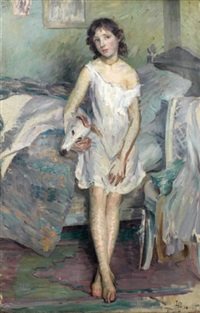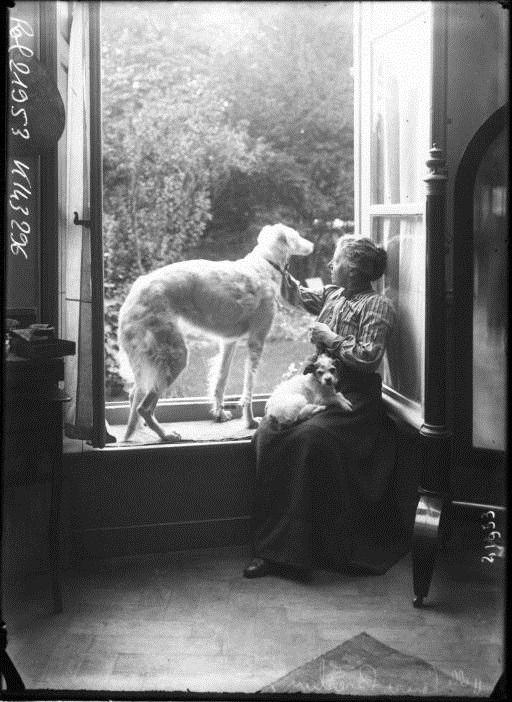December 6, 1856 – May 12, 1927
Marie Louise Catherine Breslau was a German-born Swiss painter who learned to draw to pass the time while bedridden with chronic asthma. She studied art at the Académie Julian in Paris and exhibited at the salon of the Société Nationale des Beaux-Arts, where she became an esteemed colleague of such notables as Edgar Degas and Anatole France.
After her father’s death, Breslau was sent to a convent near Lake Constance in hopes of alleviating her chronic asthma. It is believed that during her long stays in the convent her artistic talent was awakened. In the late 19th century, young middle-class ladies were expected to be instructed in the domestic arts, including drawing and playing the piano. These were admirable traits for a respectable wife and mother. Louise’s chosen career was quite unusual and often forbidden. In 1874, after taking drawing lessons from a local Swiss artist, Eduard Pfyffer (1836-1899), Breslau knew she would have to leave Switzerland if she was to realize her dream of seriously studying art. One of the few places available for young women to study was the Académie Julian in Paris.
At the Académie, Breslau soon gained the attention of her esteemed teachers and the jealousy of some of her classmates, including the Russian Marie Bashkirtseff. At this art school he also met his longtime friend, Irish artist Sarah Purser and Sophie Schaeppi (Switzerland), Maria Feller (Italy), Jenny Zillhardt and her sister, Madeleine Zillhardt.
In 1879, with the portrait Tout passé, Breslau was the only female atelier student at the Académie Julian to debut at the Paris Salon. Tout passé was a self-portrait that included her two friends. Shortly thereafter Breslau changed her name to Louise Catherine, opened her own atelier, and became a regular contributor and medal winner at the annual Salon. Due to her success at the Salon and favorable reviews, Breslau received numerous commissions from wealthy Parisians. In 1890 she joined the Salon de la Société Nationale des Beaux-Arts in Paris, not only exhibiting in the salons but also serving on the jury. She eventually became the third woman artist and the first foreign artist to be awarded the French Legion of Honor. Over the years, Breslau became a valued colleague of some of the most popular artists and writers of the time, including Edgar Degas and Anatole France. A very special person in Breslau’s life was Madeleine Zillhardt, with whom he spent over forty years. Madeleine, a fellow student at the Académie Julian, became Breslau’s muse, model, confidante and supporter. Zillhardt inherited Breslau’s estate and later donated sixty of the artist’s pastels and drawings to the Musée des Beaux-Arts in Dijon. In 1932, Zillhardt published a book about Louise Breslau entitled Louise Catherine Breslau et ses amis (Louise Catherine Breslau and Her Friends).
Breslau died in 1927, and in 1928 the École des Beaux-Arts in Paris dedicated a retrospective to her. Her work was also featured in a 1932 retrospective at Galerie Charpentier devoted to women who trained at the Académie Julian.
During World War I, Breslau and Zillhardt stayed at their home outside Paris, in Neuilly-sur-Seine. Although she had naturalized Swiss many years earlier, she demonstrated her loyalty to the French by drawing numerous portraits of French soldiers and nurses leaving for the front. After the war, Breslau retired from the public eye and spent much time painting the flowers in her garden and entertaining friends.
After his death and according to his will, Madeleine Zillhardt inherited most of Breslau’s estate. Breslau was buried next to her mother in the small town of Baden, Canton Aargau, Switzerland.


